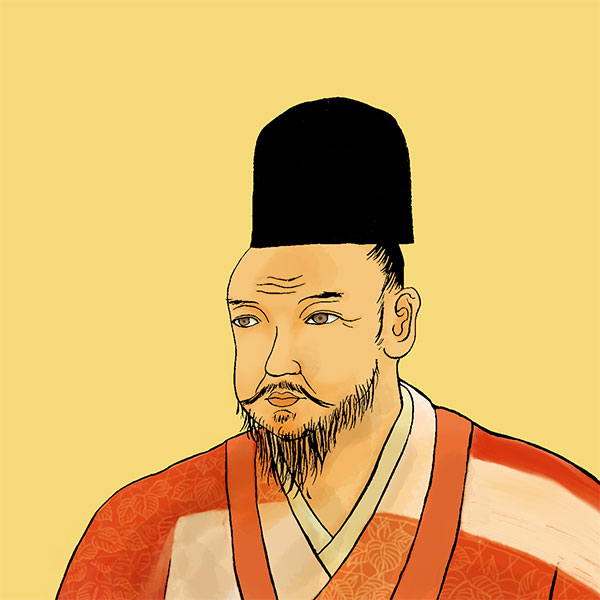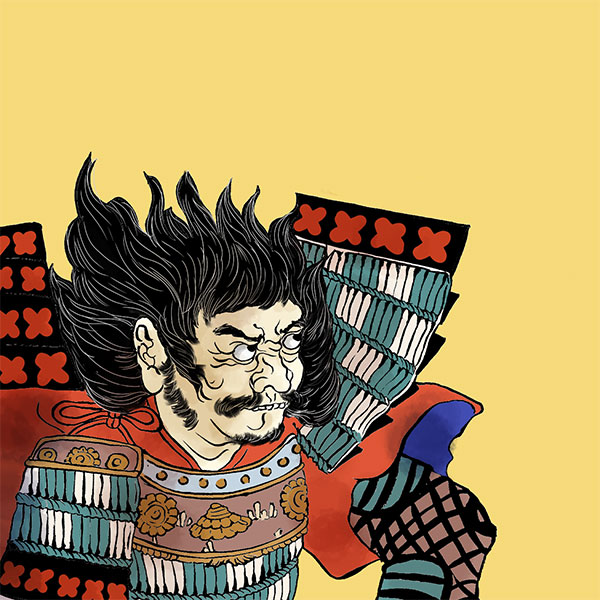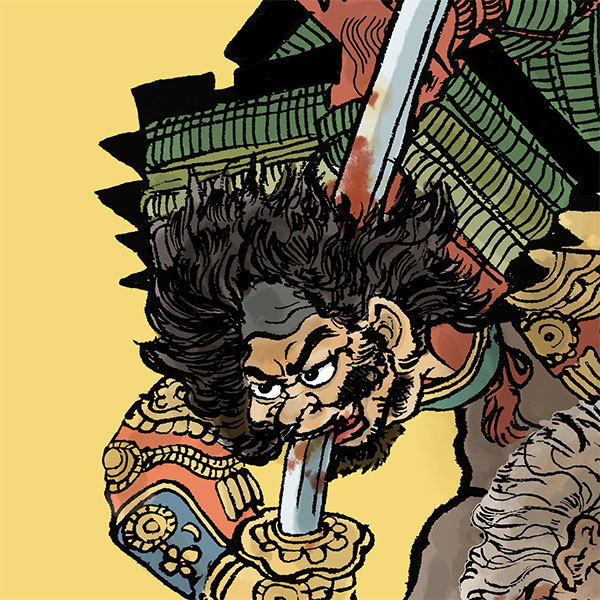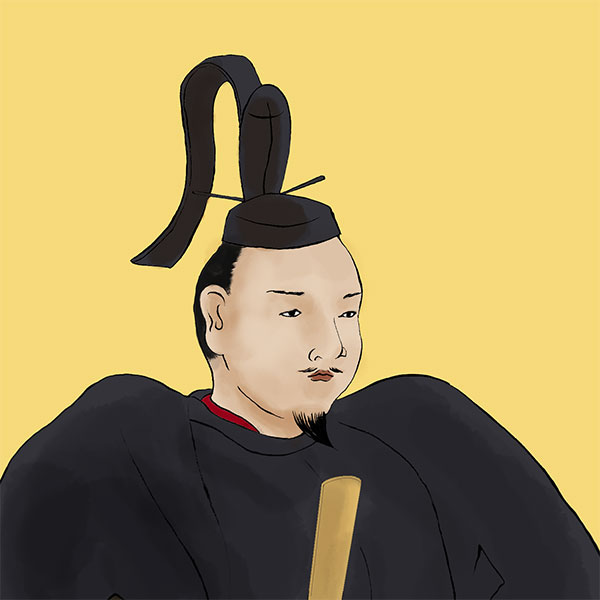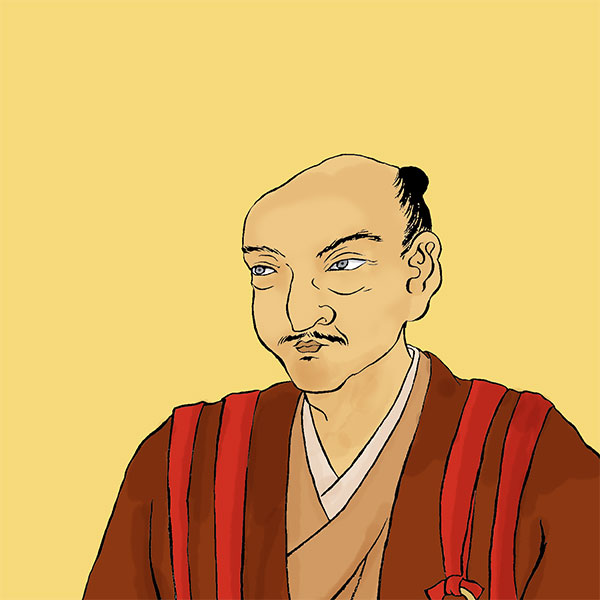Eiroku Incident (2/2)"Great swordsman general" Yoshiteru Ashikaga is defeated by the Miyoshi trio and others.
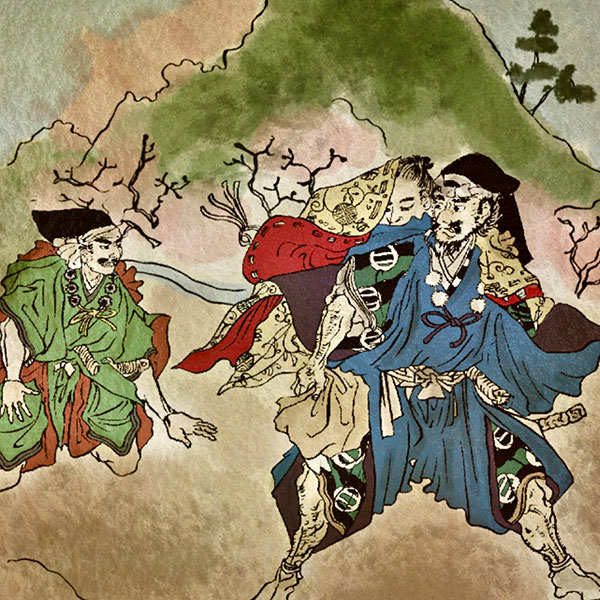
Eiroku Incident
- Article category
- case file
- Incident name
- Eiroku Incident (1565)
- place
- Kyoto
- Related castles

Nijo Castle
Although this lawsuit may be considered merely an expedient, it is not clear whether it was originally intended to be a real appeal, that is, a ``Goshomaki,'' in which the vassals militarily surrounded the shogun's palace and made demands and objections. yeah.
Originally, according to historical documents from the time, Yoshitsugu Miyoshi was scheduled to visit Kiyomizu-dera Temple on May 19th, but he made a sudden change and laid siege to the Imperial Palace. Was the pilgrimage a camouflage, or was something unexpected happening? At present, it is not clear why this change occurred at this timing.
Now, on that day, a fierce battle took place inside the Imperial Palace, and Yoshiteru's side in particular put up a great effort. A dozen people killed dozens of people. Meanwhile, Yoshiteru exchanged a final cup with his 30 or so remaining retainers, and then went out to attack Miyoshi's army. As his close retainers died in battle or committed suicide one after another, Yoshiteru himself fought bravely, wielding a naginata and sword, but was outnumbered. In the end, he was killed. He passed away at the age of 30. His death haiku is ``Is the rain in May a mist or tears? Raise my name above the clouds.''
In addition, Yoshiteru's legal wife and Konoe Tanie's daughter, Taiyouin, was sent to the Konoe family and was safe, but Yoshiteru's mother, Keijuin (Konoe Tanie's younger sister), was forced to commit suicide. . The Little Chamberlain was caught hiding and beheaded.
Furthermore, the shogunate was wary of the Miyoshi clan and had been carrying out reinforcement work on the moat and earthworks around the palace for several years, but the Eiroku Incident occurred before such work had been completed. Also, according to ``Japanese History'', Yoshiteru was trying to escape from the imperial palace the day before, but his close retainers objected, saying, ``If the shogun were to flee, his authority would be lost!'' With the persuasion of these close vassals, Yoshiteru returned to the Imperial Palace. Did he have a hunch that Mr. Miyoshi would attack?
Is the legendary fighting style of the Great Swordsman a creation?
There is a very dramatic episode surrounding Yoshiteru's death. Yoshiteru is said to have been a direct disciple of the great swordsman Bokuden Tsukahara, and he also studied under the master swordsman Nobutsuna Kamiizumi. There is even a story from Tsukahara Bokuden that he was taught the secret technique ``Ichi no Tachi'' (the truth is uncertain), and he was nicknamed ``The Great Swordsman General.''
The manner of Yoshiteru's death is not clearly known. The most brilliantly written book is Sanyo Rai's ``Japanese Foreign History''. In this scene, Yoshiteru sticks his treasured famous swords into the tatami mats around him, cuts the enemy, throws away the famous swords that have become dull due to blood and fat, pulls out a new sword, and fights again. I'm showing you. ``Japanese Foreign History'' is from the late Edo period, so this must be a work of fiction.
According to ``Japanese History,'' Yoshiteru fought bravely wielding a naginata and a sword, but as he fell to the ground, injured by the enemy's weapons, he was attacked and killed all at once. Furthermore, according to a letter written by Frois immediately after the incident, Yoshiteru died as a result of receiving a spear wound in his stomach, an arrow wound in his forehead, and a sword wound in his face. Other theories include that he was stabbed to death after being knocked down by a spear and a shoji was placed over him, or that he finally committed seppuku.
Yoshiteru's murder, which was criticized by many people
How was the Eiroku Incident received by the public? People who learned of the incident in which a shogun was murdered by his vassals were surprised and blamed the masterminds, the Miyoshi Sanninshu and Michi Matsunaga. Kenshin Uesugi (then known as Terutora after receiving Yoshiteru's ``Ku'' character) was furious and vowed to the gods and Buddha to ``decapitate Miyoshi and Matsunaga.'' Yoshikage Asakura was also furious, calling it ``unprecedented.'' Munefusa Yasumi, a senior vassal of the Hatakeyama clan who was hostile to the Miyoshi clan, expressed his anger to the point of mourning Kenshin's vassals and urging them to go to war.
Emperor Ogimachi suspended government affairs for three days and posthumously awarded Yoshiteru the title of ``Junior First Rank, Minister of the Sadaijin.'' Yotsugu Yamashina, a court noble and author of the diary ``Kototsugu Kyoki,'' wrote, ``There are no words. This is an unprecedented ceremony.'' It seems that the Emperor and the court nobles were also shaken up.
Yoshiteru's death was also mourned by the people. In February 1567, a Rokusai Nenbutsu was held in memory of Yoshiteru, with a crowd of 78,000 mourning Yoshiteru's death.
By the way, there is a theory that Hisahide Matsunaga was the mastermind behind the Eiroku Incident, and that it was Hisahide who killed Yoshiteru Ashikaga! There is a theory that This theory is based on the contents of the military talk book "Tsuneyama Kidan" written in the middle of the Edo period, but Hisahide was in Yamato Province (Nara Prefecture) at the time of the Eiroku Incident. I did not participate in the incident.
Miyoshi Sanjinshu and Hisahide Matsunaga and Hisamichi after the Eiroku Incident
After the Eiroku Incident, a conflict arose between the Miyoshi Sanninshu and Matsunaga Hisahide and Hisamichi. As originally planned, the Miyoshi Sanninshu supported Yoshihide Ashikaga (later the 14th shogun) as Yoshiteru Ashikaga's successor. On the other hand, Hide Matsunaga and Hisamichi imprisoned Kakuyoshi (later the 15th Shogun Yoshiaki Ashikaga) of Ichijoin Monzeki, who was Yoshiteru Ashikaga's younger brother and a priest. I guess the reason he didn't kill him was because he thought he could be used as a pawn in some way. Afterwards, Hisahide accepts the arrangements of Fujitaka Hosokawa and other shogunate retainers and lets Kakei escape. The Miyoshi Sanninshu attack this and move to eliminate Hisahide, and a power struggle ensues between the two.
Afterwards, Yoshitsugu Miyoshi, who had been with the Miyoshi Sanninshu, defected to Hisahide, and in 1567, the ``Battle of the Great Buddha Hall of Todaiji'' broke out, which caused Todaiji to be burnt down. The two sides would repeatedly clash in various parts of the Kinai region.
Meanwhile, a battle for succession to the shogun breaks out between Yoshihide and Kakukei. The imperial court declares, ``Whoever goes to Kyoto first will become the shogun,'' but due to the confusion, he is unable to go to Kyoto. Therefore, the Imperial Court, which was in financial difficulty, decided that the first person to donate 100 kan would become the shogun. As a result, Yoshihide became the 14th shogun. However, as the situation remains unstable, we have not been able to move to Kyoto.
Meanwhile, Hisahide approaches Nobunaga Oda. Kakukei also gave up on Yoshikage Asakura, who had been under his protection, because he did not move, and joined forces with Nobunaga. Then, in the 11th year of Eiroku (1568), Yoshiaki and Nobunaga faced the Battle of Kyoto. Nobunaga headed for Kyoto while defeating the Miyoshi clan and other hostile forces, and successfully succeeded in arriving in Kyoto. Yoshiaki was inaugurated as the 15th Shogun on October 18th.
Reread the article on Eiroku no Hen

- WriterNaoko Kurimoto(Writer)I am a former travel industry magazine reporter. I have loved history, both Japanese and world history, since I was a child. I usually enjoy visiting temples and shrines, especially shrines, and often do ``pilgrimages to sacred places'' themed around historical figures. My favorite military commander is Ishida Mitsunari, my favorite castle is Kumamoto Castle, and my favorite castle ruins is Hagi Castle. My heart flutters when I see the ruins of battle castles and the stone walls of castle ruins.


